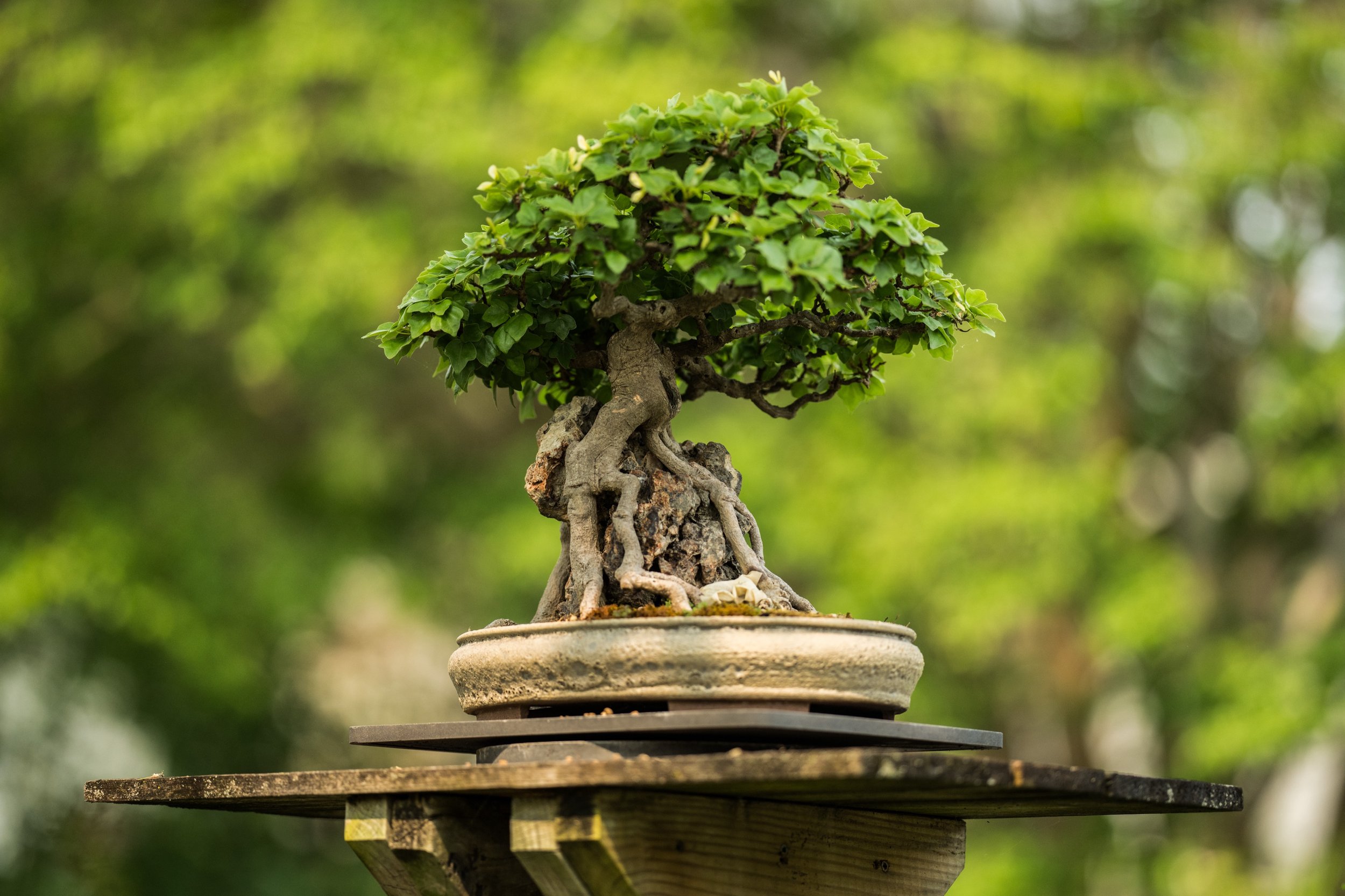On May 13, the sun was shining on a beautiful spring day in Washington, D.C. As I drove through Rock Creek Park, trees formed a vibrant cathedral of green over the road, which was nearly empty of cars as Washingtonians remained home to mitigate the spread of COVID-19.
I’d been given the unusual privilege of going to the National Bonsai & Penjing Museum in the midst of the District-wide shutdown to take photographs for the National Bonsai Foundation’s 2019 Annual Report.
On the premises of the U.S. National Arboretum, the Museum has always been a quiet and peaceful place, ideal for reflection and for connecting with nature. Usually the parking lot is fairly full, and both visitors and staff can be seen walking the grounds.
But May 13 was different. Only essential staff were allowed on site, and work days were staggered to encourage social distancing. Walking toward the Museum, with the Capitol Columns in the distance, I didn’t see a single person. The grounds felt emptied out, reclaimed by the quiet.
At the Museum, staff had been doing the vital work of keeping the trees healthy. The lack of visitors meant more ambitious projects could be undertaken, like repotting the famous Yamaki pine and letting the foliage of other trees grow out because they wouldn’t be on display.
Walking through the Museum alone, I felt both enormous gratitude and a sense of sadness, that others could not currently experience this living monument to bonsai.
But in these trying times, under the watchful eye of Museum staff, the trees have thrived. Their tenacity is a sign of hope, a reminder that the trees have persevered through other trying times. Outside these walls, the world shifts, our country convulses – but the trees endure.
As a photographer who now makes a living snapping pictures of some of the world’s most influential figures, Stephen Voss didn’t always know that photography could be more than a hobby. Once a bonsai novice, he certainly didn’t think he would publish a photography book of bonsai.
Now that he’s an accomplished photographer, Voss wants to share his “tricks of the bonsai photography trade.” This entry is part of his regular guest blog series, “Photographing Bonsai with Stephen Voss", published on NBF’s blog, covering everything from lighting, angles and mindset needed when photographing the trees. This has been a special entry in this series given the times.
Sign up for our newsletter and follow us on Facebook and Instagram to never miss one of his entries! Read his last entry here.


























